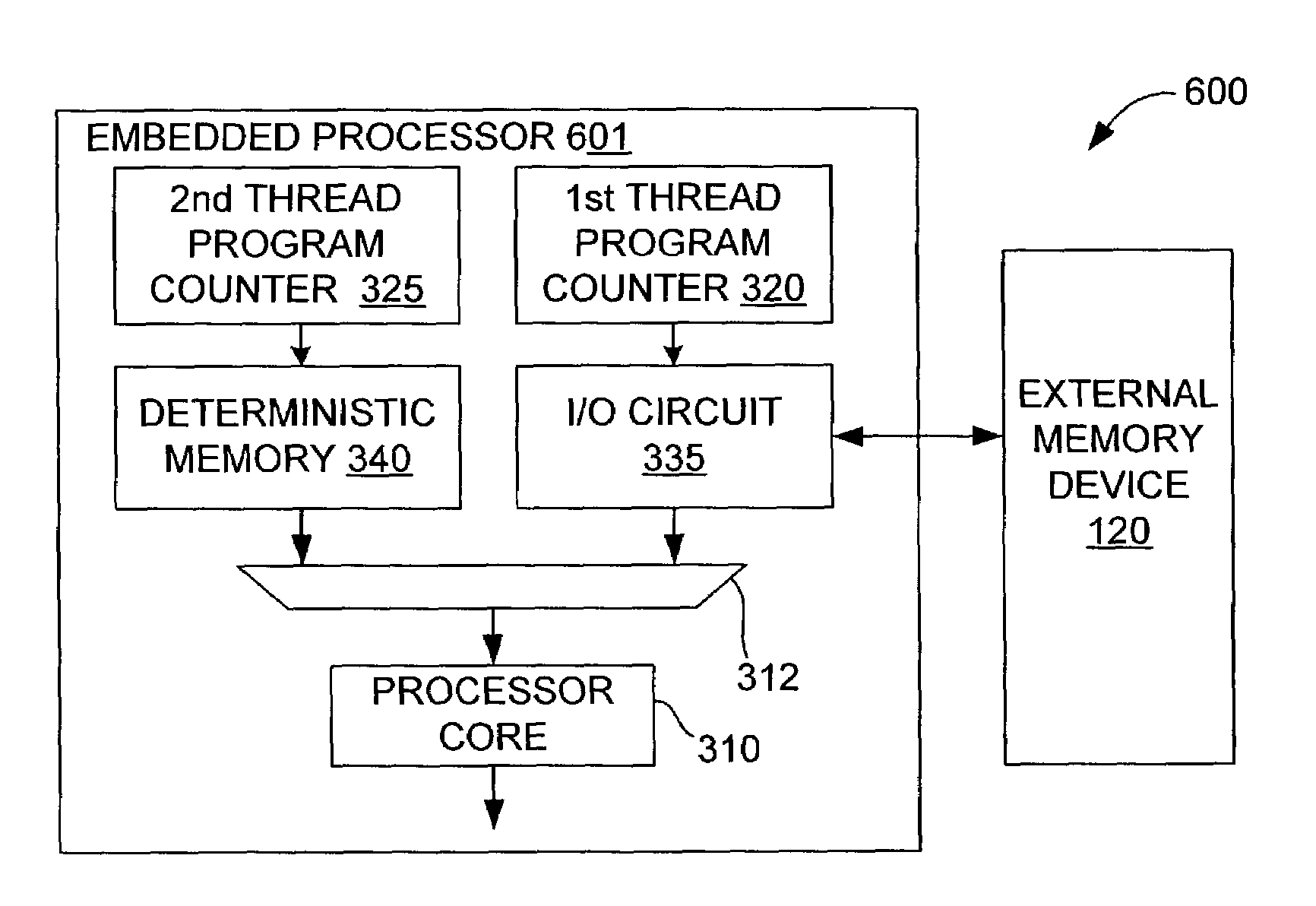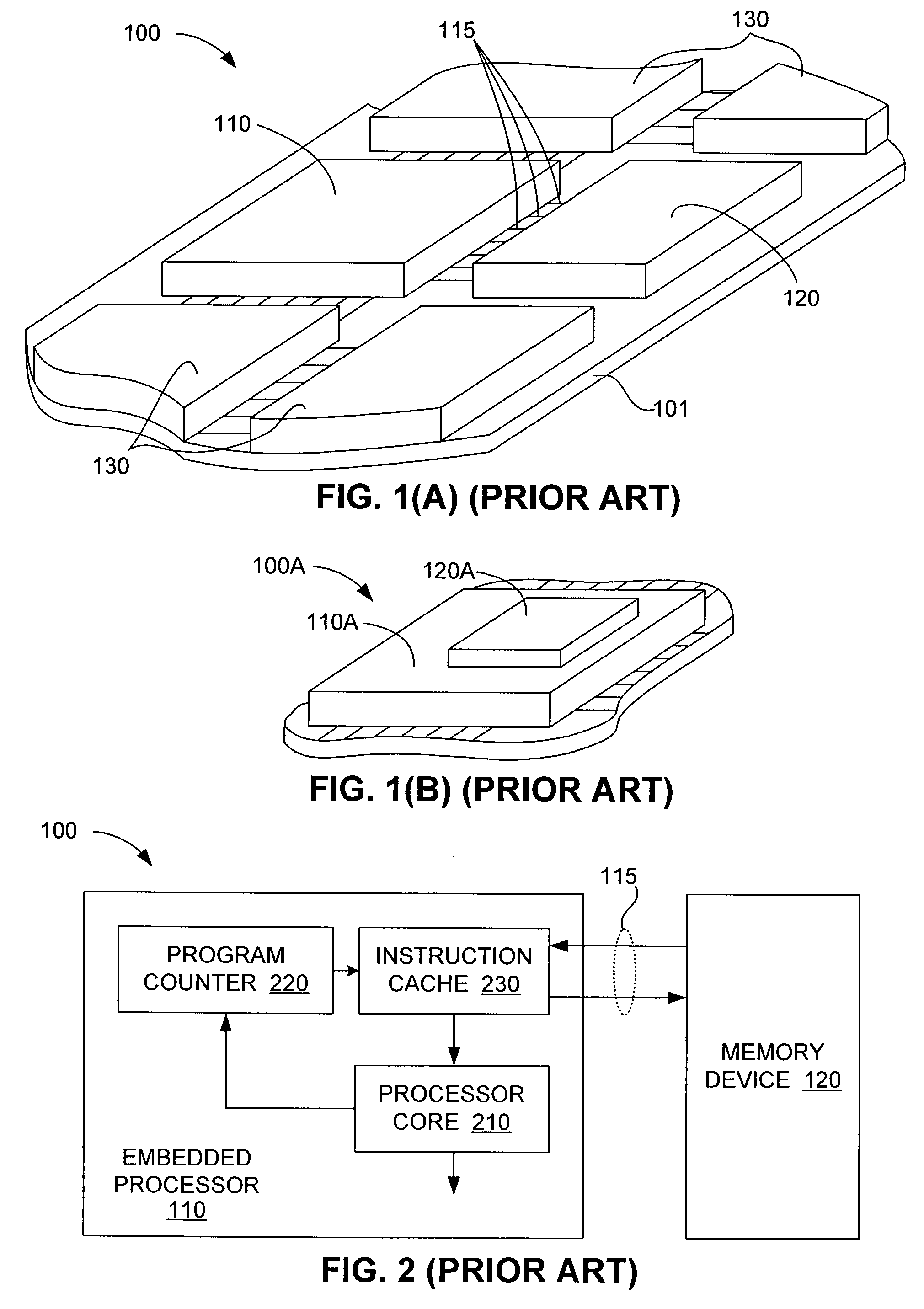Multi-threaded embedded processor using deterministic instruction memory to guarantee execution of pre-selected threads during blocking events
a technology of instruction memory and pre-selected threads, applied in the field of multi-threaded embedded processors, can solve the problems of relatively slow operating frequency of inexpensive external memory, relative slow external memory devices, and significant increase in embedded processor core frequencies, so as to improve processor efficiency and reduce latency. , the effect of improving the efficiency of the processor
- Summary
- Abstract
- Description
- Claims
- Application Information
AI Technical Summary
Benefits of technology
Problems solved by technology
Method used
Image
Examples
Embodiment Construction
[0019]The term “embedded processor” is utilized herein to mean a discretely packaged semiconductor device including a processor core (e.g., a central processing unit (CPU)) whose purpose is to perform a specific function (i.e., as opposed to general purpose computing) within an electronic system. Instruction and data words associated with the specific function performed by the embedded processor are at least partially stored on an inexpensive external memory device (e.g., an EEPROM or flash memory device) that is accessed by the embedded processor during operation. In addition to the CPU, the embedded processor may also include other circuits associated with performance of the specific (e.g., control) function performed within the electronic system, such as on-chip data memory, serial and / or parallel input / output (I / O) circuitry, timers, and interrupt controllers. Moreover, the embedded processor may be a system-on-chip (SoC) type device that includes one or more of a digital signal...
PUM
 Login to View More
Login to View More Abstract
Description
Claims
Application Information
 Login to View More
Login to View More - R&D
- Intellectual Property
- Life Sciences
- Materials
- Tech Scout
- Unparalleled Data Quality
- Higher Quality Content
- 60% Fewer Hallucinations
Browse by: Latest US Patents, China's latest patents, Technical Efficacy Thesaurus, Application Domain, Technology Topic, Popular Technical Reports.
© 2025 PatSnap. All rights reserved.Legal|Privacy policy|Modern Slavery Act Transparency Statement|Sitemap|About US| Contact US: help@patsnap.com



